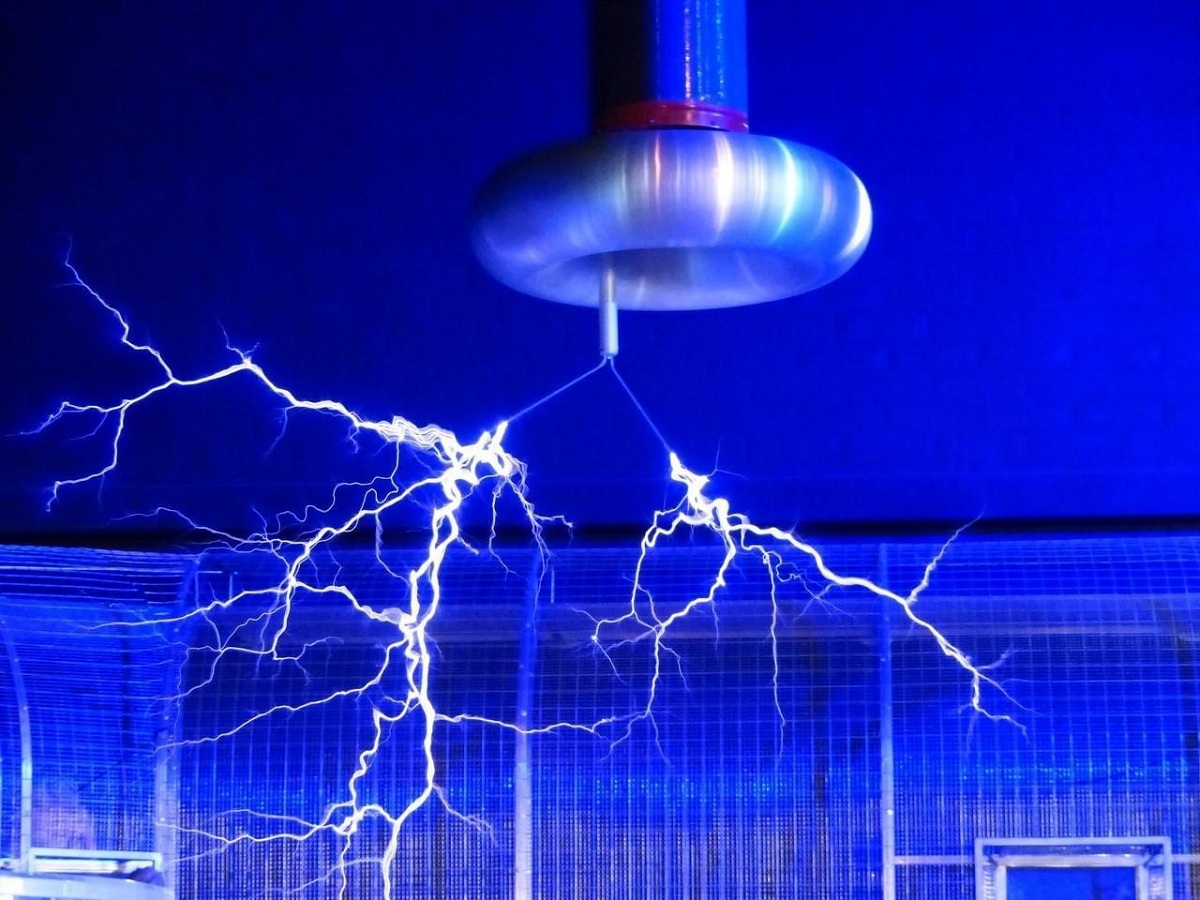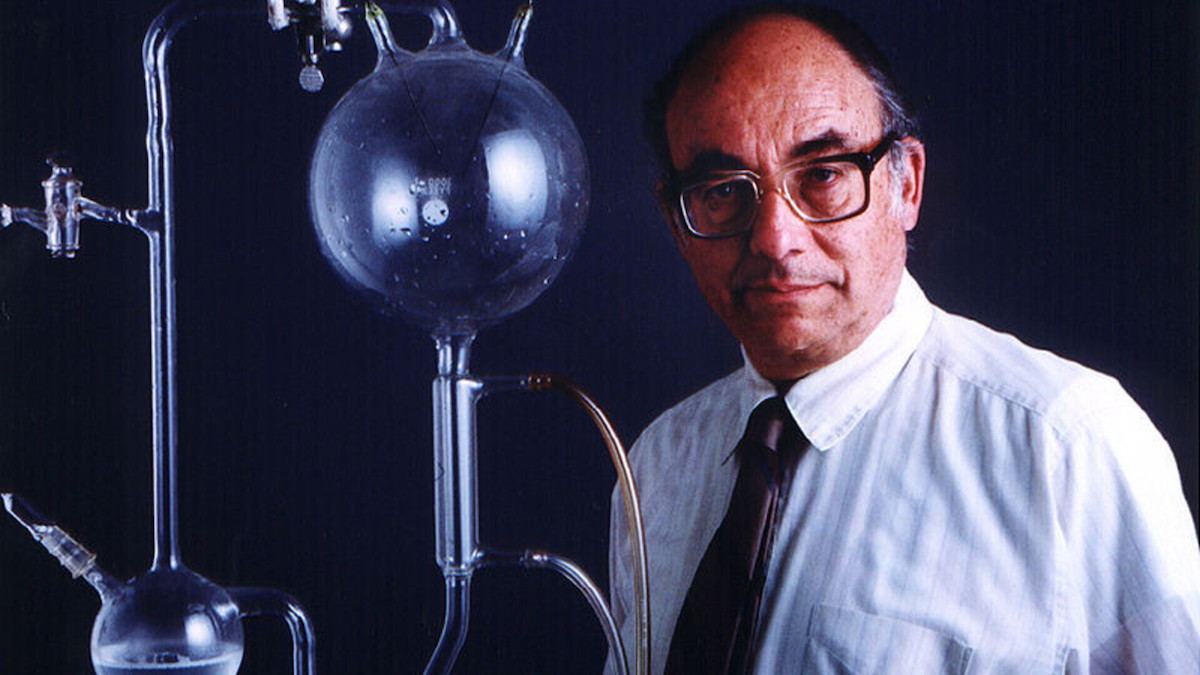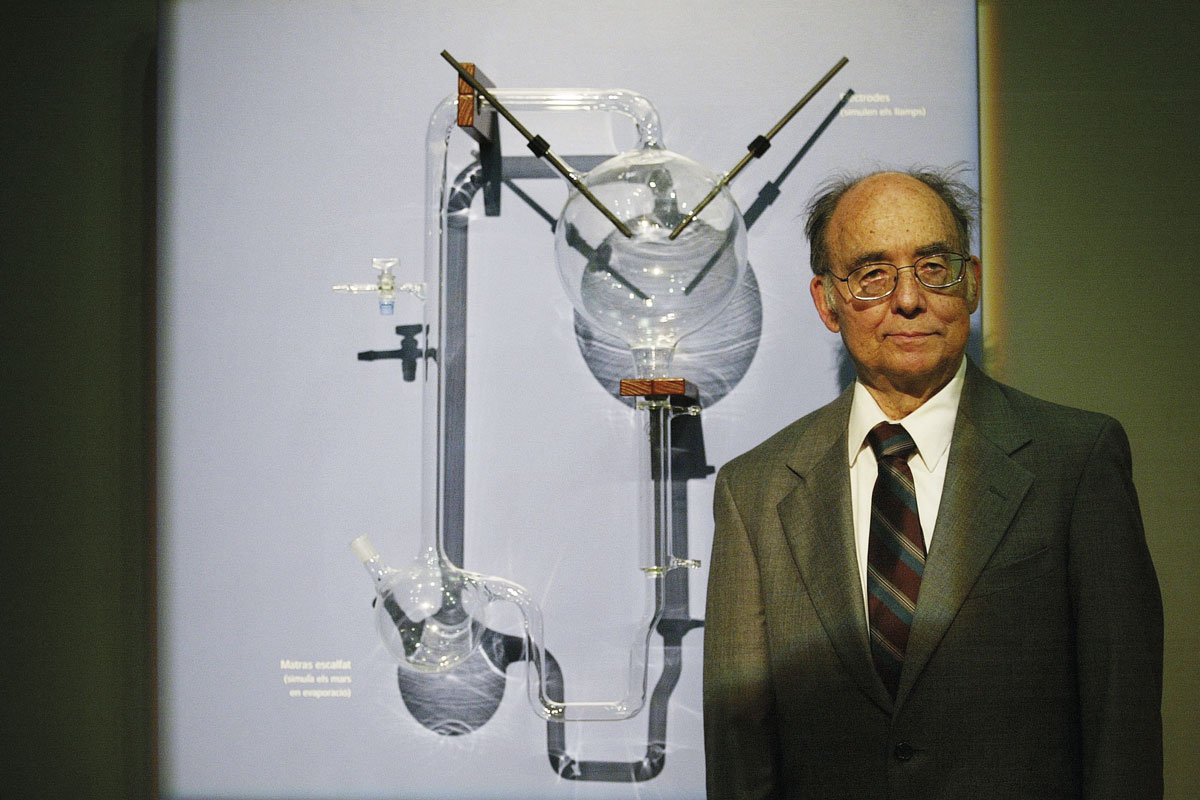
On May 15, 1953, a 23-year-old chemist published in the journal Science the results of an experiment vital to biology that opened the way to a new field of scientific knowledge. This young man was Stanley L. Miller. His work pioneered the discipline of prebiotic chemistry as we know it today and provided us with the first clues as to how life appeared on Earth. The Miller experiment It is well known in the world of science.
Therefore, we are going to dedicate this article to tell you everything you need to know about Miller's experiment and what it consists of.
Primitive earth

Stanley Miller had just graduated from chemistry and transferred to the University of Chicago with the idea of a doctoral thesis. Within a few months of his job, Nobel laureate Harol C. Urey made it to college and Miller attended his seminar on the origin of the earth and the early atmosphere. The lecture attracted Miller so much that he decided to change the subject of the thesis and presented Yuri with an experiment that he had never tried before.
At that moment, Russian biochemist Alexander I Opalin published a book entitled "The Origin of Life". In it, he explained how spontaneous chemical processes lead to the emergence of the first life forms, which have gradually developed over a timescale of millions of years.
About 4 billion years ago, the inorganic molecules of the primitive earth would react to produce the first organic molecules, from here more complex molecules, and finally the first organisms.
Oparin envisioned a primitive land that was completely different from the current land, before it was transformed by the creature itself.
Clues from Miller's experiment

One of the clues as to what this early Earth was like is based on existing astronomical knowledge. Assuming that the earth and other planets in the solar system come from the same cloud of gas and dust, the composition of the earth's atmosphere can be very similar to that of planets like Jupiter and Saturn: therefore, it is likely rich in methane, hydrogen, and ammonia. This will be a reducing atmosphere with a very low oxygen concentration because this is the late contribution of the first photosynthetic bacteria.
The surface of the earth will be submerged in water. The ocean is rich in chemical molecules. Oparin envisioned the ancient ocean as a primitive soup rich in chemical molecules.
This early world will be much more turbulent than today's world, with frequent volcanic activity, frequent electrical storms, and strong solar radiation (there is no ozone layer to avoid ultraviolet radiation). These processes They will provide energy for chemical reactions that take place in the ocean and will ultimately lead to the emergence of life.
Many scientists, including Yuri, have shared these ideas. But that was pure speculation, no one had tried it, much less had it been tested. Until Miller showed up.
Miller's experiment in depth

Miller envisioned an experiment that would test Yuri and Opalin's hypothesis and persuade Yuri to execute it. The proposed experiment involves mixing gases believed to be present in the early Earth's atmosphere - methane, ammonia, hydrogen, and water vapor - and testing whether they can react with each other to produce organic compounds. You must ensure that the process is carried out under anaerobic conditions (that is, without oxygen) and does not involve living elements that can promote the reaction.
For this reason, he designed a closed glass device with a flask and tube, oxygen cannot enter, and he sterilized all materials to eliminate all life forms. He poured a small amount of water representing the primeval ocean into a flask. He filled another flask with methane, hydrogen, and ammonia as the original atmosphere.
Below, the capacitor allows substances that form in the atmosphere to cool and liquefy through the discharge generated by the two electrodes, which will simulate the effects of lightning.
Miller ran an experiment one night. When I returned to the lab the next morning, the water in the flask had turned yellow. After one week of operation, analyzed brown water and found that many compounds were produced that did not exist before, including four amino acids (compounds used by all organisms as cell building materials) (protein).
Miller's experiments show that if environmental conditions are right, organic molecules can spontaneously form from simple inorganic molecules.
Organic molecules from space
However, a few years later, scientists concluded that the degree of reduction in the early atmosphere was lower than Yuri and Miller had imagined, and that it could consist of carbon dioxide and nitrogen. New experiments show that, under these conditions, synthesis of organic compounds is negligible. It is difficult to imagine that such a fine soup can give life. But then the solution to this problem appeared, not from new experiments on Earth, but ... from space.
In 1969, a meteorite formed 4.600 billion years ago fell near Murchison, Australia. After analysis, it was found to contain a variety of organic molecules, including amino acids and other compounds synthesized by Miller in the laboratory.
In this way, if the conditions of the primitive earth are not suitable for the formation of organic molecules, Alien objects may have used enough chemicals to spice up earth's prebiotic soup and let us see life for the first time.
At present, experts seem to be again inclined to the original reducing atmosphere and more inclined to Miller's results. Therefore, it is acceptable that if our planet's atmosphere is shrinking, it is most likely synthesizing the compounds necessary for life on earth, and if our atmosphere is rusting, they may be contributed by meteorites and comet nuclei. .
However, whether it started on our planet or off our planet, a host of different tests have shown that organic compounds can be the result of relatively simple chemical reactions.
I hope that with this information you can learn more about Miller's experiment.